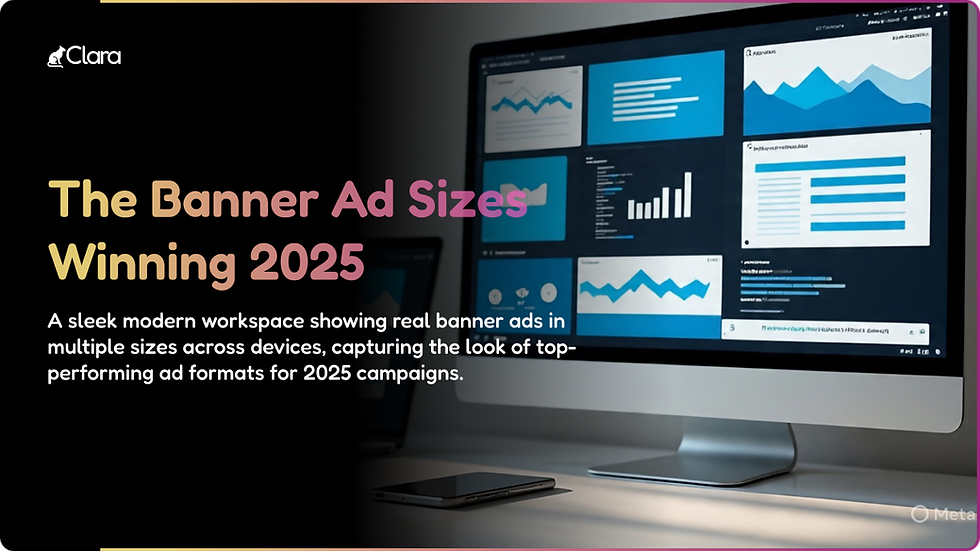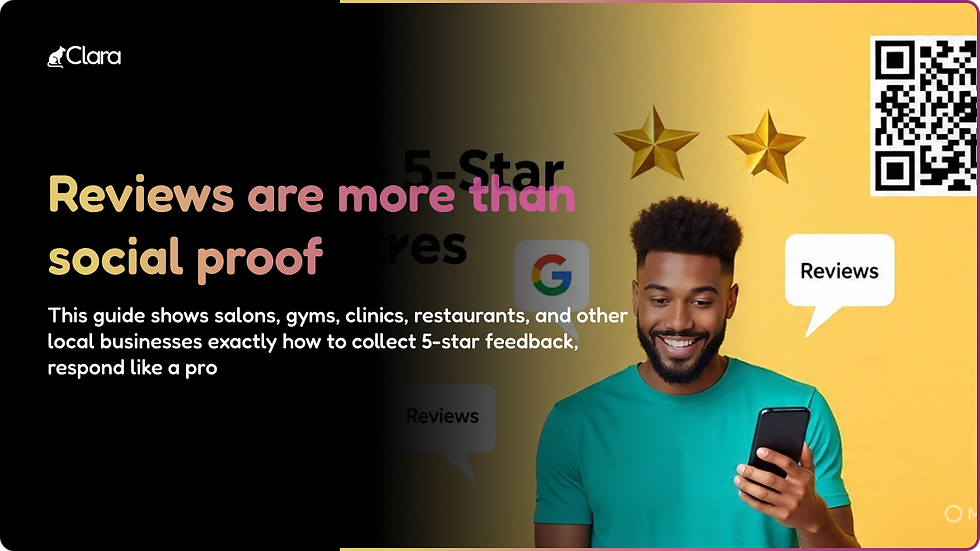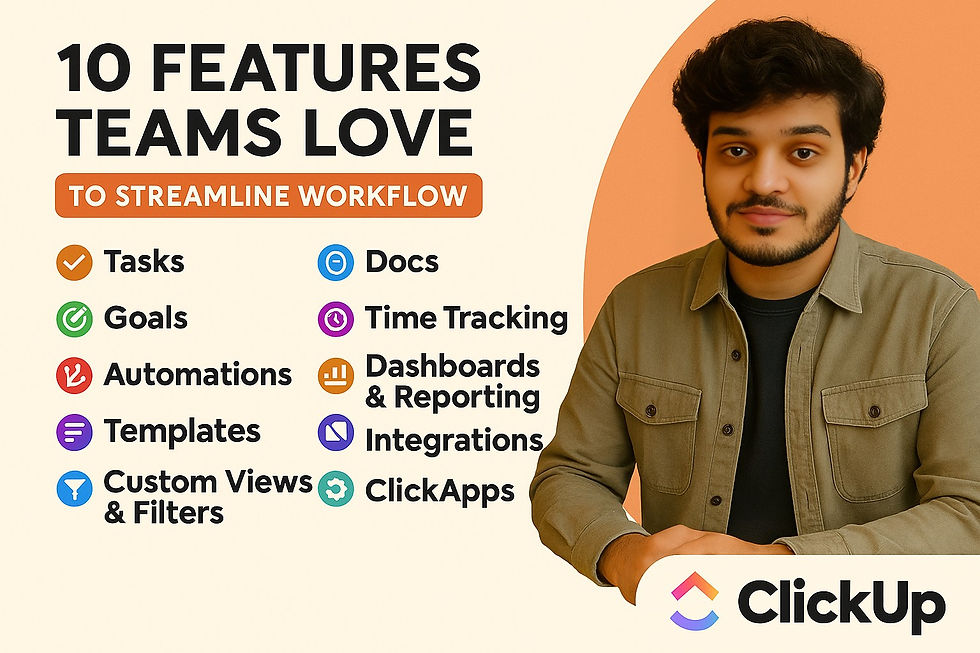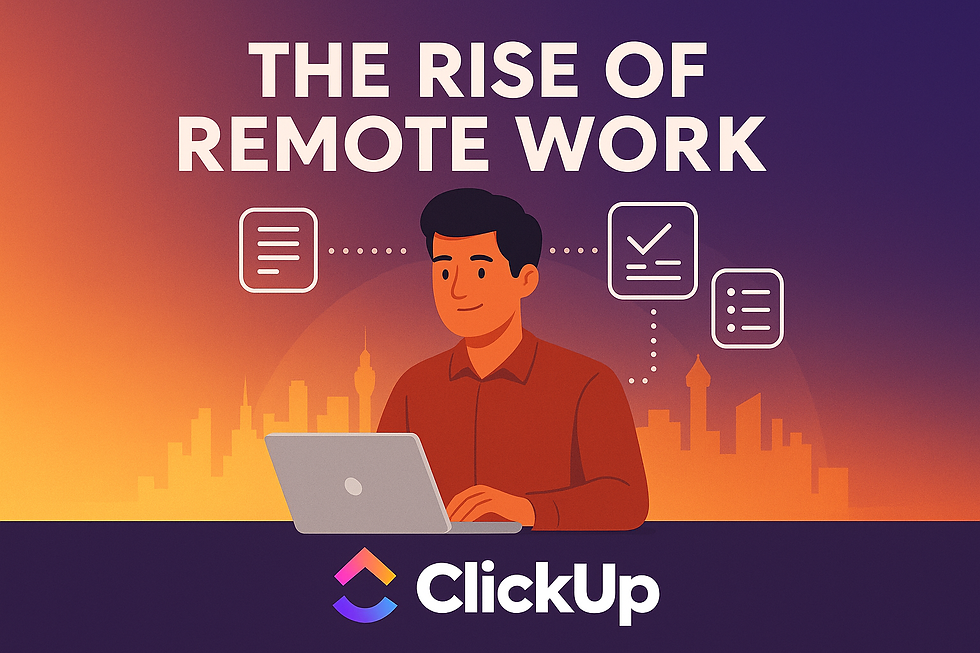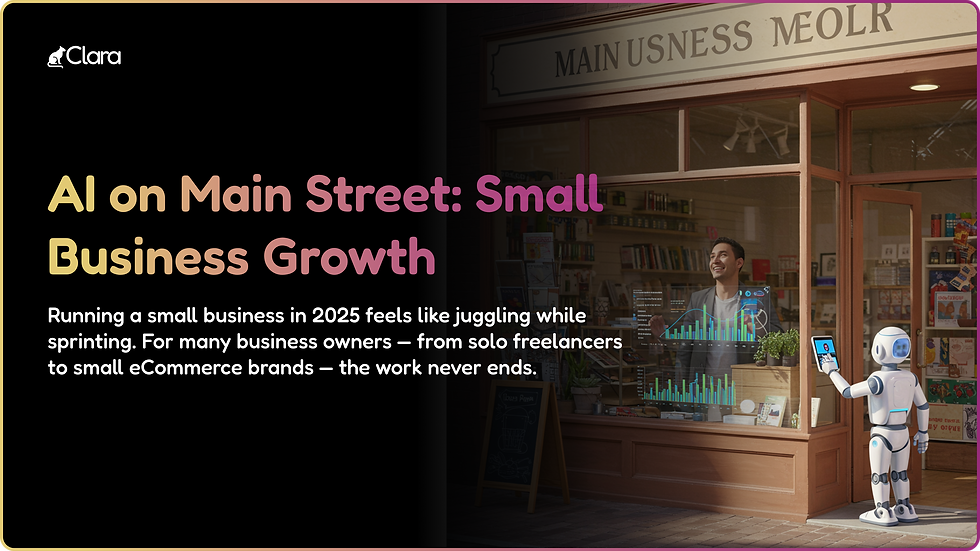- Dravya Bansal
- Jan 5, 2024
- 6 min read
The role of a Restaurant Management tools is always in motion. There’s always something else to get done, a new fire to put out, and broken things to fix. All of that on top of the everyday tasks from scheduling to payroll to reporting can catch up to you.
1. Task management software
To ensure your restaurant operates seamlessly, creating checklists for every essential task is paramount. From maintaining cleanliness on flat tops to replenishing sanitizers, these small yet crucial tasks can easily slip through the cracks.
While paper checklists suffice for occasional needs, the hassle of daily printing and managing them becomes an added chore. Moreover, laminated paper or dry-erase methods often lead to messy and disorganized lists.
Ensure Seamless Operations:
Create tailored checklists for essential tasks, from maintenance to sanitization.
Streamline tasks, minimizing manual hassles and disorganized lists.
Monitor team productivity and maintain a comprehensive task history.
Recommended Tools: 7Shifts
This is where the significance of task management software shines through. It serves as an effective tool to streamline tasks, offering tailored checklists for individual roles and shifts. Furthermore, it provides a means to monitor your team’s productivity effectively. Unsure if a task was completed earlier in the week? Task management software maintains a comprehensive historical record of completed tasks.
2. Manager log books
In any restaurant setting, having a centralized platform for managers to exchange information is essential, even if it’s a shared cloud document. This practice prevents critical information from getting lost amidst text conversations or scattered emails. Moreover, it eliminates the hassle of dealing with sticky notes cluttering your Point of Sale (POS) system.
Centralized Information Exchange:
Facilitate centralized information sharing for managers.
Reduce confusion by serving as a repository for essential details.
Quickly address complaints, employee concerns, and prep for shifts.
Introducing management log books, another invaluable asset to streamline operations. These log books significantly reduce confusion by serving as a repository for essential details. When handling customer complaints or employee concerns, managers can swiftly catch up by referring to the log book. Additionally, managers leverage these books to prepare for upcoming shifts at their convenience and maintain a record of victories and setbacks
3. Employee scheduling software
Say farewell to the hassle of dealing with frustrating spreadsheets, manual paper schedules, and convoluted text message chains. The tedious task of creating analog schedules not only consumes time but also lacks the advantage of collecting valuable scheduling data.
Effortless Scheduling:
Bid farewell to manual schedules and text message chaos.
Generate, edit, and track labor overtime efficiently.
Make informed decisions based on comprehensive scheduling data.
Fortunately, there’s a superior solution: employee scheduling software. By embracing cloud-based scheduling tools, you gain the ability to effortlessly generate schedules, make necessary adjustments on the go, and efficiently track labor overtime. These tools empower you to make informed decisions based on comprehensive scheduling data
4. Employee communications tools
While texting and phone calls serve their purpose in employee communications, the dynamic nature of the restaurant industry demands a dedicated and nimble tool.
Utilizing a secure and business-focused communication tool enables instant sharing of schedules and announcements among your staff. Moreover, it simplifies employees’ ability to request time off and resolve payroll-related issues, such as missing clock-ins or outs.
Dedicated Communication:
Ensure instant sharing of schedules and announcements.
Simplify time-off requests and resolve payroll issues seamlessly.
Leverage business-focused tools for efficient communication.
While Slack stands as a versatile employee communication platform facilitating online connections, it lacks specific features tailored for the restaurant industry.
5. Time clocking
In the realm of restaurant operations, embracing time-clocking software has become indispensable—considering the bygone era of physical paper cards and manual punches! This software allows employees to effortlessly clock in and out with a simple touch, while seamlessly integrating with your payroll system to automatically compute work hours.
Efficient Work Hour Management:
Streamline clock-ins, reducing labor costs and ensuring compliance.
Calculate overtime accurately, maintaining secure hour records.
The advantages extend further: restaurant time clocking software aids in curbing early clock-ins, thus effectively reducing labor costs. Compliance hurdles are effortlessly addressed through enforced break times and regulated shift lengths. With the ability to swiftly calculate overtime and maintain secure records of your team’s hours, this software ensures both accuracy and efficiency
6. Tip management
In numerous restaurant settings, servers often engage in tip pools and tip payouts at the culmination of each shift. Tip pooling involves the collective contribution of tips by employees, subsequently divided evenly among all tipped staff members. Conversely, tip payouts occur when servers distribute segments of their tips among fellow staff, including bartenders, hosts, and food runners.
Tipping Efficiency:
Enable tip pools and payouts for staff distribution.
Ensure fair distribution among tipped employees.
7. Payroll automation
Opting for payroll software presents a significant advantage over hiring a dedicated payroll specialist or engaging an agency. The perks of using payroll software amplify further when integrated with other systems.
Streamlined Payroll Processing:
Sync time clock and scheduling data for accurate wage computations.
Automate calculations, reducing errors and administrative time.
By syncing directly with your time clock and scheduling software, payroll software streamlines wage computations, overtime pay, and the deductions for taxes and benefits. Automation eliminates the reliance on manual calculations, significantly reducing payroll errors and minimizing the time spent on administrative tasks.
8. Labor management reporting
When integrated with your sales data, labor management reporting tools offer comprehensive insights into your restaurant operations. These tools empower you to make well-informed staffing decisions by precisely tracking the allocation of your labor budget, recognizing dependable employees, and comparing projected versus actual working hours
Informed Staffing Decisions:
Analyze labor budget allocation and track dependable employees.
Compare projected versus actual working hours for efficiency.
9. Kiosk ordering
Your busy customers don’t always have time to wait in line. Kiosk ordering tools speed up the ordering process, making it easier to keep up during a mealtime rush. Many customers also appreciate the quick and user-friendly process of ordering on a kiosk.
With kiosk ordering, your customers place orders digitally, rather than talking to a cashier. They receive a number, and the order is sent directly to the kitchen.
Enhanced Customer Experience:
Speed up ordering and reduce waiting times for busy customers.
Offer user-friendly digital menu browsing and modifications.
This allows your team to focus entirely on fulfilling orders when it’s busy, rather than payment processing. Kiosk ordering also makes it easy for customers to browse the entire menu at a glance and request order modifications as needed.
There are many restaurant kiosk providers, including Toast, Grubbrr, and TouchBistro. These platforms offer kiosks in different sizes and configurations to suit your restaurant.
Many fast food chains already have successful kiosk setups, with McDonald’s being the most prominent. These kiosks not only created a positive customer service environment but also helped the chain navigate FOH labor shortages in recent years.
10. Inventory management
Efficient inventory management software is instrumental in overseeing your restaurant’s stock levels. Seamlessly integrating with your POS system and various restaurant tools, it actively monitors stock levels and signals when supplies are running low. This proactive approach helps avert stockouts, which not only frustrate customers and back-of-house (BOH) staff but can also adversely impact your restaurant’s profitability.
Optimized Stock Control:
Monitor stock levels, prevent stockouts, and reduce wastage.
Fine-tune order quantities based on consumption insights.
Moreover, inventory management tools play a pivotal role in curbing unnecessary wastage. By meticulously tracking consumption rates for each item, you gain valuable insights to fine-tune future order quantities accordingly. Prominent restaurant inventory management platforms such as MarginEdge and MarketMan excel in delivering these functionalities
11. Point-of-sale (POS) system
Your point-of-sale system, commonly known as POS, stands as the technology facilitating swift order processing from customers, transmitting orders directly to the kitchen. In addition to order handling, POS systems efficiently accommodate various contactless payment methods, encompassing debit cards, credit cards, and mobile payment systems.
It’s crucial to recognize that while a POS system plays a pivotal role in managing customer orders and payments, it’s not an all-encompassing restaurant management tool but rather a vital component of the operational framework. A robust restaurant POS system seamlessly integrates with other tools, including task management, tip management, and inventory management, creating a cohesive and efficient operational ecosystem
12. Food cost tracking
Food costs, subject to frequent fluctuations driven by supply and demand dynamics, pose a significant challenge for restaurants. Food cost tracking tools serve as invaluable assets by seamlessly integrating with inventory management systems, enabling precise monitoring of ingredient expenses.
These tools furnish detailed daily reports, meticulously recording price fluctuations and offering forecasts. Leveraging this data empowers restaurants to adapt swiftly—whether by menu adjustments, informed purchasing decisions, or price alterations. Leading food cost tracking tools like Meez and MarginEdge excel in providing these functionalities.
Reinventing the way restaurant teams work
Simple to set up, easy to use. Give your restaurant the team management tools they need to be successful. Start your free trial today.
No credit card required






